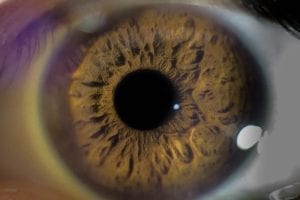In a major advance for patients with the rare eye disease keratoconus, Glaukos has secured U.S. Food and Drug Administration (FDA) approval for Epioxa, an incision-free corneal cross-linking therapy. As reported by Biospace, the company plans to launch Epioxa in the United States in early 2026, offering new hope for those affected by this progressive and potentially blinding disorder.
Understanding Keratoconus
Keratoconus affects between 50 and 200 out of every 100,000 people and is most aggressive in individuals under 30 years old. The disease causes the cornea—the eye’s clear, dome-shaped front surface—to bulge outward into a cone shape. This structural change leads to symptoms such as light sensitivity, double or distorted vision, and seeing halos around lights. If left untreated, keratoconus can progress to severe vision loss and even blindness. While glasses and contact lenses can help with milder symptoms, advanced cases may require a corneal transplant. According to Glaukos, as many as 20% of untreated patients eventually need this invasive surgery.
Traditional Treatments & Their Limits
The mainstay non-transplant intervention is corneal cross-linking, which strengthens the cornea by creating new bonds between collagen fibers. However, traditional cross-linking requires surgically removing or loosening the cornea’s top layer to allow the application of riboflavin eye drops, followed by activation with ultraviolet (UV) light—a process that can cause pain and prolong recovery. Glaukos previously received approval for Photrexa, a therapy using this standard approach.
Epioxa: A Pain-Free, Incision-Free Alternative
Epioxa eliminates the need for incisions or removal of the top corneal layer. Instead, the therapy employs a novel, oxygen-rich formulation applied directly to the surface of the eye, which is then activated by UV light—mirroring the effect of traditional cross-linking, but without the discomfort and lengthy healing associated with surgery. This innovative approach is expected to minimize pain and dramatically reduce recovery time for patients.
Clinical Evidence and Safety
Approval of Epioxa is supported by two pivotal Phase III clinical trials involving more than 400 patients. Results demonstrated that Epioxa significantly improved maximum corneal curvature—a key measure of disease progression—while maintaining a favorable safety profile.
Looking Ahead
With FDA approval in hand, Glaukos anticipates bringing Epioxa to U.S. patients in the first quarter of 2026. As the only incision-free cross-linking therapy for keratoconus, Epioxa is poised to change the standard of care for this challenging disease, offering a less invasive, more comfortable, and effective option to preserve vision and prevent blindness in those at risk.









